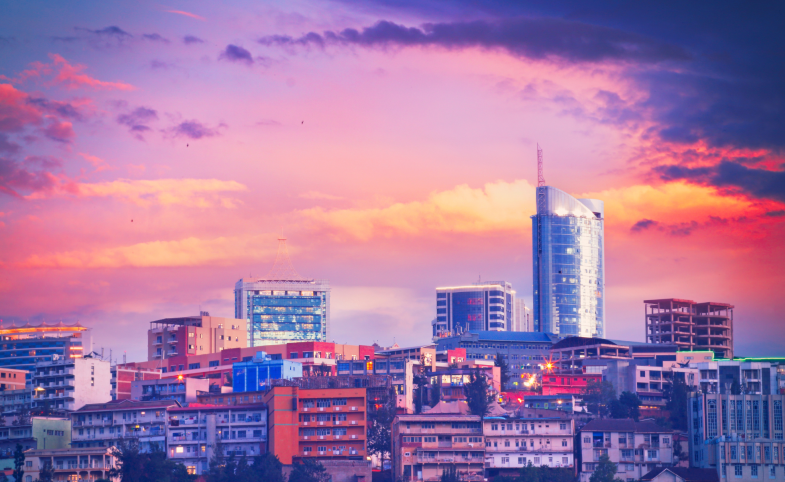The CPD Blog is intended to stimulate dialog among scholars and practitioners from around the world in the public diplomacy sphere. The opinions represented here are the authors' own and do not necessarily reflect CPD's views. For blogger guidelines, click here.

Reimagining Diplomacy as a System, Not a Symbol
What If peace had a strategy?
Not just a statement of values or a diplomatic gesture—but a system. One built to operate under pressure, survive political turnover, and scale across borders.
We’ve engineered entire global frameworks for defense, intelligence, and deterrence. But the infrastructure for stability? Still missing. Still treated as optional. Still activated only after collapse.
In Libya, international mediation only gained traction once state institutions crumbled. In Sudan, early-warning signals were ignored until civil war erupted. In Haiti, the absence of coordinated civic and diplomatic scaffolding left communities to self-organize under unbearable strain. And while cities like Medellín and Kigali (pictured above) have shown that peace can be deliberately designed, their approaches remain exceptions—not the rule.
When I say peace, I’m not referring to an abstract idea of harmony or the absence of violence. I mean the full ecosystem of peacebuilding and conflict prevention—the diplomatic, civic, and cultural systems that actively reduce the likelihood of violence, build trust, and enable long-term stability across borders.
The Operating System We Never Built
In Libya, a fragile truce holds while foreign weapons and interests continue to pour in. In Haiti, the collapse of basic governance has left communities to improvise safety, justice, and care on their own. In Sudan, efforts at resolution often arrive only after scorched earth and splintered lives. Across every continent, the story repeats: by the time diplomacy is activated, it’s already too late.
Conflict is not accidental—it is designed, resourced, and refined over time. Systems are built to enforce, defend, and escalate it. But the frameworks that prevent conflict? They remain scattered and underfunded, with no shared mandate or global investment equivalent to the systems we’ve built for war.
We know how to operationalize surveillance, sanctions, and strikes. But we’ve never built the diplomatic equivalent: real-time stabilization infrastructure, anticipatory trust-building, or civic platforms that can interrupt violence before it metastasizes.
Disruption, Repair, Relapse, Repeat. Post‑conflict is no longer a phase—it’s a loop.
Why Stability Keeps Losing
The systems that survive crises are the ones designed to. Financial institutions stress-test their protocols. Militaries run war games. Technology firms simulate threats and build redundancies. But the global scaffolding for peacebuilding and conflict prevention rarely receives the same long-term planning or iterative testing that military and security systems undergo as a matter of course.
Too often, peacebuilding remains an abstract aspiration—rather than a system deliberately designed to endure, across every level of society.
Conflict engineers don’t rely on improvisation. They follow doctrine. They train for failure. They plan for volatility.
"Too often, peacebuilding remains an abstract aspiration—rather than a system deliberately designed to endure, across every level of society."
Power alone cannot hold a nation. When everything—governance, safety, diplomacy, public trust, and civil order—is built around dominance instead of durability, collapse is only ever one crisis away.
Diplomacy, by contrast, is still called upon to respond once escalation is underway—rather than being embedded as a front-line system in its own right.
The Real Infrastructure Gap
Diplomacy, at its best, is the infrastructure that prevents breakdown before it begins.
But diplomacy isn’t limited to treaty tables or formal envoys.
It takes many shapes—through city-led planning, cultural bridging platforms, local mediation systems, and embedded civil society responders who act as stabilizers in moments of collapse. These actors practice diplomacy on the ground, often without the title.
And yet, they rarely receive the recognition, funding, or training that might allow their work to scale. What doesn’t exist is treating these as scalable infrastructure—funded with the same ambition, innovation, and risk capital as we fund AI, defense, or space.
There’s no global R&D ecosystem for peace tech, mediation, or public diplomacy tools—unlike military R&D.
Peacebuilding roles remain underpaid, symbolic, or siloed. There’s no career pipeline for diplomacy architects comparable to West Point for military officers or Y Combinator for startups.
We have nowhere near the investment in anticipatory systems for social legitimacy, trauma healing, or civic trust as we do in weapons testing or cybersecurity.
Until we build this missing architecture, peace will always be the improvisation.
What If We Designed for Peace Like We Design for Security?
Imagine if early-warning civic tech, local mediation networks, and cultural exchange platforms were funded the way we fund AI startups.
Imagine if diplomacy was integrated directly into military strategy—not as an afterthought, but as a stabilizing counterforce—designed alongside defense planners to reduce the very risks we otherwise prepare to fight.
Imagine if the people designing risk-detection tools, mediating where legitimacy is fragile, and creating cultural platforms that build connection faster than disinformation were recognized, funded, and scaled as core infrastructure—not one-off interventions. Systems.
The real question is whether leaders will choose to build these systems now—before conflict outpaces us again—or whether diplomacy will remain a gesture, not a system. A symbol, not a scaffold.
A Different Legacy
History will ask whether we designed the architecture of stability when we had the chance—or left peacebuilding and conflict prevention to fail by default. Whether we gave diplomacy the same operational discipline we gave to escalation. Whether we dared to think of diplomacy not as soft power—but as smart infrastructure.
This is not a call for idealism. It is a blueprint for resilience.
We’ve built around power, not beneath it. That’s why everything collapses when it does.
Visit CPD's Online Library
Explore CPD's vast online database featuring the latest books, articles, speeches and information on international organizations dedicated to public diplomacy.
POPULAR ARTICLES
-
November 3
-
November 5
-
November 13
-
November 25
-
November 17
Join the Conversation
Interested in contributing to the CPD Blog? We welcome your posts. Read our guidelines and find out how you can submit blogs and photo essays >.









